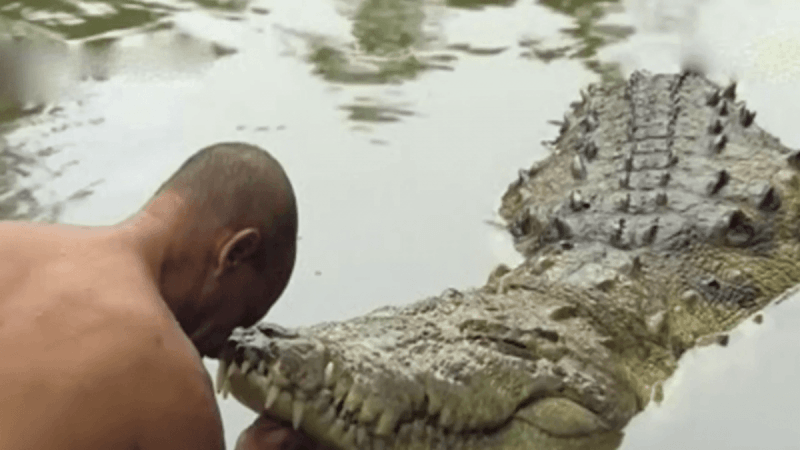Priests at Sri Ananthapura temple in north Kerala's Kasaragod had a surprise visitor on Tuesday. A giant crocodile paid a visit to the temple and it is a 'vegetarian' croc named Babiya who has been living in the temple's pond for years. Shocked priests said that Babiya had entered the temple for the first time.
Babiya has become an internet sensation after photos inside the temple's premises started circulating on social media.

According to temple official Chandrasekharan, "There are reports that Babiya entered the sanctum sanctorum, however, these reports are incorrect. On Tuesday, the crocodile did come to the temple premises but returned to the temple pond after chief priest Chandraprakash Nambisan asked it to do so. The temple pond is its permanent habitat."
In the middle of the lake is the Ananthapura Temple in a village named Ananthapura. In the whole of Kerala, this place is believed to be the original seat (Moolasthanam) of Ananthapadmanabha Swami (Padmanabhaswamy temple) Thiruvananthapuram. If legends are to be believed then this is the original site where Ananthapadmanabha settled down. Followers believe that for safeguarding the temple; Babiya is the guardian appointed by God.
Babiya, the gentle and vegetarian crocodile
Babiya is supposed to be a gentle crocodile and people say that it is fully vegetarian. Who named the crocodile and from where did it come into the temple pond remains unknown. Elders of the area state that Babiya has been in the pond for more than 70 years and it has never expressed wild behaviour. The crocodile eats the offerings from the temple (Prasad) and comes out when the priest calls out its name.
An employee of the temple was quoted as saying that Babiya is fed two times a day. At times he puts the rice ball right into its mouth. Babiya and the priest have a unique chemistry. There are many fish inside the pond but Babiya never attacks or consumes them.
Wildlife experts are of the opinion that Babiya is a mugger crocodile and it is quite possible that it lives on temple offerings. When this type is left in the wild; it preys on fish, rodents and reptiles and at times bigger catch.













